
13 minute read
Impact: Putting grantee research into use
by IFS
IMPACT
Putting Grantee Research into Use
IFS’s Vision is for scientists in Low- and Lower-Middle-Income Countries (LLMICs) to contribute fully to a global research community committed to reducing poverty and supporting sustainable development, both nationally and regionally. It monitors realisation of its Vision through a number of output- and outcome-related metrics, including:
> Increased numbers of LLMIC early career women and men scientists supported > Increased support per scientist, in terms of grant support, mentoring and capacity-enhancing activities > Increased numbers of publications, including in more high-impact journals > Improved research and research-associated skills, including organisational, communication and interpersonal skills > Greater translation of research into use, through involvement in evidence-based decision-making and uptake of STI by society > Improvements in science literacy, via the development of research communities, including Alumni Associations, and > Improved career pathways.
The online Project Completion Forms capture early career scientists’ own assessment of how their skills have developed as a result of IFS support and facilitate the assessment of their development as researchers by scientific peers (i.e., reviewers and SAC members). Data are analysed to identify the aspects of research grant support and complementary activities that can be improved to better support research capacity enhancement and validate the assumptions underpinning the approach. In addition, IFS conducts periodic country-wide surveys with grantees, in particular to understand more clearly about their research and career achievements.
Snail vector hunting in wetlands shared by pastoralists and their livestock. Researcher Dr Ajakaye Remilekun (right) with two field assistants.
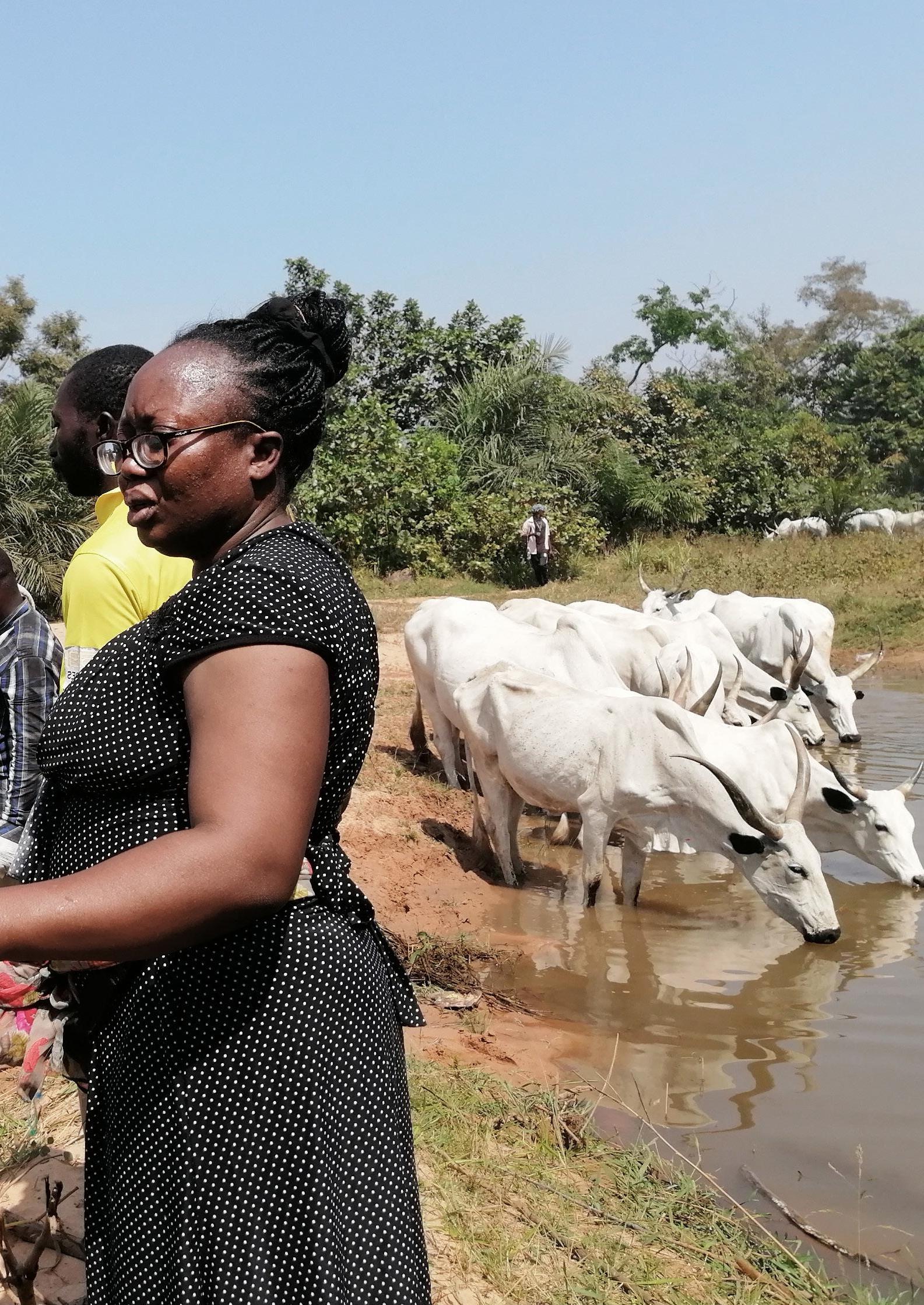
A selection of research results and achievements of IFS grantees
IFS grantees are contributing significantly to changes around the world, through their commitment to scientific advancements, their enthusiasm to learn and to work with others, and their attainment in getting their research results put into use at local, national, regional and global levels. As gleaned from 112 grantee responses to a survey question about how their results are being used, numerous impacts are evident from IFS’s support for the research of early career scientists, in immediate, near-term and long-lasting ways, in villages, forests, fields, policy discussions, government practices and the global scientific community. These scientists have also thus far published 43 articles in peer-reviewed scientific journals.
At a national level, informed by grantee research results: > In Burkina Faso, results on shea tree density and fruit yield per hectare were used in the “Climate-Smart Agriculture Investment Plan for Burkina Faso” initiated by the World Bank,
Government of Burkina Faso and their partners. > In Ghana, data generated from a project’s microbiological assessments were presented and considered for the revision of national standard GS 955:2013 (Microbiological Analysis of Food Sampling Plans and Microbiological Criteria). > In Kenya, policy is being shaped for control of camel keds to improve camel health and hence milk and meat production, leading to better lives for marginalised pastoralist communities. > In South Africa, a large-scale, country-wide replication was done to test the effect of predation on rodent pests. > In Sri Lanka, projects are being carried out to evaluate the dynamics of micronutrients and metalloid accumulation in rice grains and rice-cultivating soils across the country, and > In Zimbabwe, generated landuse/landcover change maps highlight hotspots of soil erosion in a lake catchment, useful for public awareness and planning purposes by natural resources managers at the Environmental Management
Authority.
Contributions to applied science were seen: > In Burkina Faso, where a more in-depth study is coming up with ideotypes that better meet the needs of the population in terms of consumption of amaranth, a crop of nutritional and economic value. > In Ivory Coast, where trees were supplied to producers within the framework of a field school programme for the development of agroforestry, including the transferring of grafting technology. > In Pakistan, where more than 20 lines of wheat cultivars with desired agronomic features were selected to be used in a breeding programme, and > In Thailand, where a re-engineered bivalent SFTI-I inhibitor was shown to have inhibitory activity against cancerous cells.
In addition to the impacts that IFS-funded research is having in grantees’ own countries and the incremental contributions they are making to specific lines of scientific inquiry, the researchers supported by IFS are also demonstrating how they are fostering societal uptake of science, technology and innovation through:
> In Burkina Faso, awareness campaigns for rural populations as part of the study on the impact and role of good hygiene practices in the transmission of hepatitis > In Burkina Faso, organised days with meat sellers, breeders and consumers to convey useful information about human contamination by pathogenic microorganisms > In Kenya, community and public engagement activities with pastoralist communities, and > In Madagascar, finding a compromise among farmers, agricultural technicians and scientists to design programmes in agricultural products more appropriate to the local reality.
From the micro-level of human cells, to the ultimate macrolevel of satellite remote sensing, IFS grantees are making an impact in tiny and vast environments alike. Difficult though it is to choose which of the 112 projects from 2016 to highlight, presented here are 13 that are representative of topics, countries, regions, women and men, and of all of the many early career scientists who IFS is honoured to include among those who work to support its mission, especially to enhance opportunities to put their own high-quality research into use in their home countries.
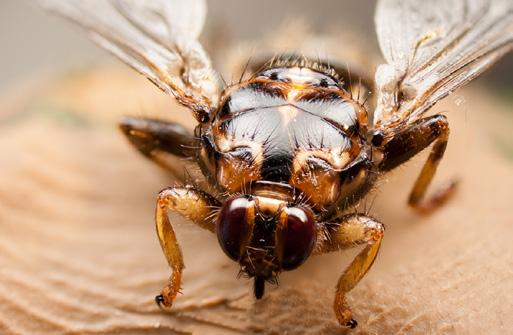
DR JOEL LTILITAN BARGUL Department of Biochemistry, Jomo Kenyatta University of Agriculture and Technology, Kenya
The role of biting flies (genus Hippobosca) in transmission of pathogenic animal African trypanosomes in northern Kenya
Based on our report proposing the use of camel biting hippoboscids (commonly known as keds) in xenodiagnosis of camel haemopathogens, researchers working on camel health at the International Centre of Insect Physiology and Ecology (icipe, Nairobi) commonly collect camel keds to indirectly detect camel pathogens. The ongoing work will shape policy for control of camel keds to improve camel health and hence milk and meat production, leading to betterment of the lives of marginalised pastoralist communities. Through our community and public engagement activities with pastoralist communities, farmers have gained knowledge and skills on vector-borne diseases, their transmission, and use of traps and insecticides to control insect vectors such as camel keds and biting flies such as stomoxys, as well as ticks.
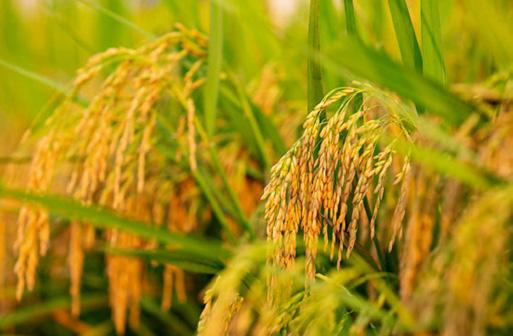
DR LALITH D B SURIYAGODA Department of Crop Science, University of Peradeniya, Sri Lanka
Diversity of Sri Lankan rice germplasm in storing micronutrients and heavy metals in rice grains and potential of agronomic management in fortifying rice grains with micronutrients
Results of the research have led to national-level projects to evaluate the dynamics of micronutrients and metalloid accumulation in rice grains and rice-cultivating soils in the country. The findings of the current research alone were not adequate to generate practical impacts as the experiment was conducted in one location and inside a research station. Therefore, more data are needed from across the country to formulate new agronomic packages such as fertiliser application plans.
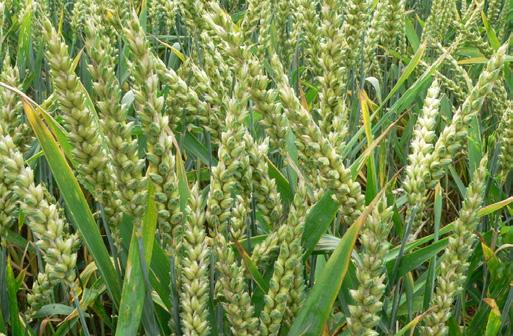
DR MIAN ABDUR REHMAN ARIF Nuclear Institute for Agriculture and Biology, Pakistan
Genetic mapping of adult plant stripe rust resistance in novel germplasm of wheat
We have identified several marker trait associations, particularly from the synthetic-derived wheat (SWD) germplasm. After careful analysis of allelic profiles of the germplasm set, and associating it with the phenotypic data collected and analysed during this project, we have selected more than 20 lines with desired agronomic features to be used in our breeding. We have made 20 different crosses by crossing elite but susceptible wheat cultivars with the resistant lines identified during this project. The seeds have been harvested and will be taken in subsequent filial generations to allow segregation of alleles and identify superior genotypes with desired resistance in the new germplasm. Interestingly, two lines from the SDW set proved resistant for stripe, leaf and stem rusts in a national screening nursery. They have also been incorporated in our breeding programme to yield superior cultivars of wheat in future.
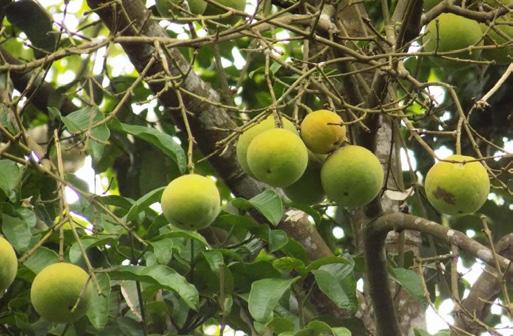
DR LAURENT KOUAKOU KOUAKOU Minor Crop Research Group, University of Nangui Abrogoua, Ivory Coast
Domestication and enhancement of secondary forest products: Induction of early fruiting of Garcinia kola (Heckel) by grafting elite trees
Several plants were either supplied to SODEFOR, the main Ivorian company in charge of forest development, to reforest 7.5 hectares (750 plants), or provided to producers within the framework of a field school programme for the development of agroforestry in Ivory Coast. We are presently in the process of transferring the grafting technology to the producers to prevent them from still depending on us. We believe that the transfer of this technology to rural areas will guarantee the sustainability of this project.
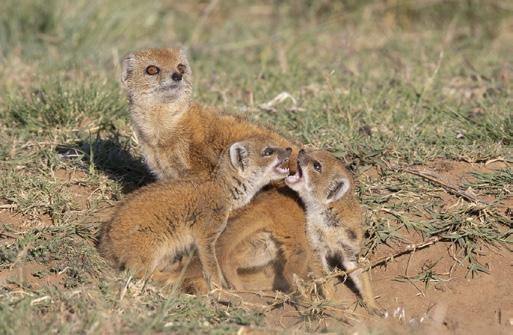
DR LOURENS HENDRIK SWANEPOEL Department of Zoology, University of Venda, South Africa
The potential of small carnivore predation on rodent pests as an ecosystem service in rural small holding farms of the Vhembe District, South Africa
Predation by mammalian and avian predators has gained some traction among a broad range of stakeholders. Even though my research did not lead to policy actions, several current projects in Africa have embarked on a large-scale, country-wide replication to test the effect of predation on rodent pests. Similarly, I was also invited to attend the “Expert Meeting on Innovative Control Approaches of Rodent-Borne Epidemic Diseases and Other Public Health Consequences of Rodents’ Proliferation”, hosted by the WHO in Lima in 2019 to discuss biological control of rodent pest, specifically the role of biodiversity.
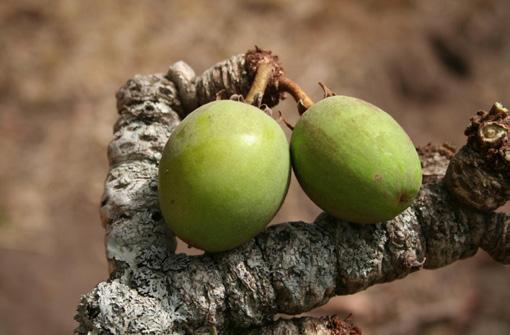
DR LOYAPIN BONDÉ Department of Biology and Plant Physiology, University of Ouagadougou, Burkina Faso
Assessment of fruit production and economic value of shea tree (Vitellaria paradoxa C.F.Gaertn.) for more profitable exploitation in Burkina Faso
Allometric equations developed from my project for estimating fruit and kernel yields of shea tree are widely used by the Ministry of Environment, Green Economy and Climate Change of Burkina Faso to assist local organisations and private companies working in the shea sector to assess the potential production of shea products in their zones. My institution works in collaboration with the ministry to provide technical assistance to shea actors. Results on shea tree density and fruit yield per hectare were used in the “Climate-Smart Agriculture Investment Plan for Burkina Faso” initiated by the World Bank, Government of Burkina Faso and their partners.
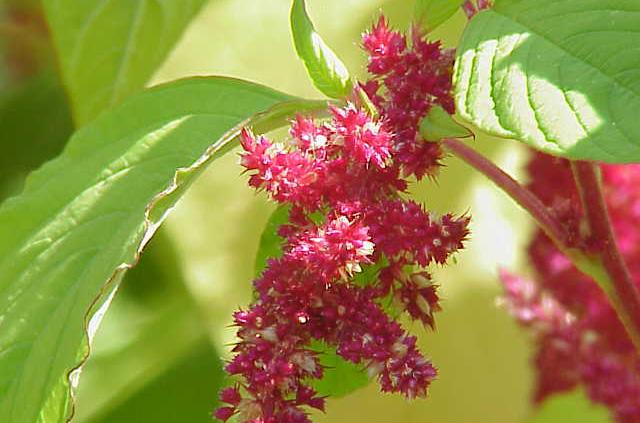
DR BOUREIMA SAWADOGO Department of Biology and Plant Physiology, University of Ouagadougou, Burkina Faso
Ethnobotanical and genetic diversity study of leaf amaranth (Amaranthus spp) from Burkina Faso
The ethnobotanical investigation showed that the diversity of amaranth species is well consumed by the population and contributes to poverty reduction, particularly for women. Some accessions with high vegetable potentiality were identified as useable to enhance amaranth consumption and procure income for households. Indeed, agromorphological characterisation has made it possible to identify four species of amaranth cultivated in Burkina Faso, which are currently the subject of a more indepth study to come up with ideotypes that better meet people’s needs. This will improve the standard of living of the local population through the economic contribution that it will generate and the added value that it will bring to the consumer’s plate.
DR ASSÈTA KAGAMBÈGA Biochemistry Laboratory, University of Ouagadougou, Burkina Faso
Prevalence of emerging food-borne pathogens (Salmonella Typhimurium and STEC) and epidemiological surveillance of their resistance to antibiotics in poultry and pigs
The results of our analyses revealed that chickens, oxen, pigs and small ruminants and their meats can be a source of human contamination by pathogenic microorganisms. This allowed us to organise days with the sellers of meats, breeders and consumers to convey useful information.
MR JEAN BIENVENUE OUOBA Department of Biology and Plant Physiology, University of Ouagadougou, Burkina Faso
Characterisation of the Hepatitis E virus in wastewater and wells, with a view to environmental risk management
Our work focused on finding sources of environmental contamination of Hepatitis E (HEV) by drinking untreated water or by contact with slaughterhouse wastewater. The preliminary results have enabled us to carry out awareness campaigns for populations in rural areas during sample collection and during the socio-epidemiological survey carried out as part of the study on the impact and role of good hygiene practices in the transmission of hepatitis.
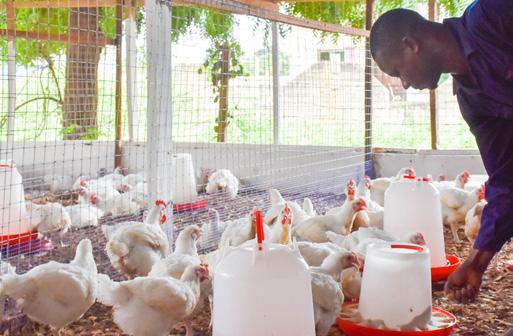
DR ANGELA PARRY-HANSON KUNADU Department of Food Science, University of Ghana, Ghana
Enhancing food safety practices of informal smallholder chicken processing: A case study in Accra, Ghana
The results of the Food Safety Knowledge, Attitudes and Practices (KAP) study and the microbiological assessment have been disseminated to regional representatives of live bird traders, the National Association of Poultry Farmers and Apex Women in Poultry Association, as part of a poultry biosecurity workshop organised by FAO in Accra. Participants were trained in general food safety concepts and hygienic processing of slaughtered birds. I was invited as a member of the Microbiology Committee to review and update the national standard GS 955:2013 (Microbiological Analysis of Food Sampling Plans and Microbiological Criteria). The data generated from the microbiological assessments from my project were presented and considered for the standard’s revision.
DR PANUMART THONGYOO Department of Chemistry, Thammasat University, Thailand
Synthesis and biological activity against human-beta tryptase of bivalent SFTI-I inhibitor
The results from this project have showed clearly that the reengineered bivalent SFTI-I inhibitor has an inhibitory activity against cancerous cells, and showed a potential scaffold for the drug discovery. Also, the synthetic development for the peptide syntheses, including particular methodologies gained from this work, have been applied for the advanced organic chemistry laboratory at my department.
DR NASANDRATA RAVONJIARISON Laboratoire de Radio-Isotopes, University of Antananarivo, Madagascar
Peasant perception and management of soil fertility in relation to carbon sequestration: Case of conservation agriculture in Lake Alaotra, Madagascar
One of the project’s objectives was to find a compromise among farmers, agricultural technicians and scientists to design programmes in agricultural products more appropriate to the local reality. The use of new knowledge from my thesis allows the creation of new forms of dialogue among these three entities that are involved directly or indirectly in agricultural soils, and their fertility management. The linking of local knowledge from the study to that of scientists will produce more complex, more adequate actionable knowledge aimed at optimising agricultural production conditions and developing relevant recommendations.
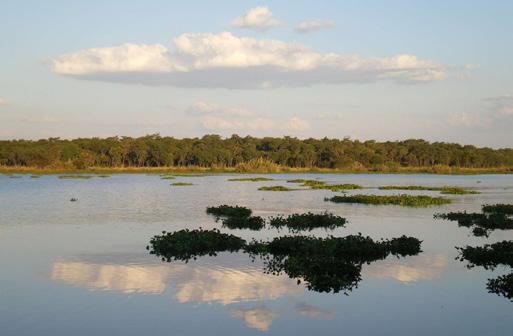
MS PAMELA TENDAUPENYU Department of Biological Sciences, University of Zimbabwe, Zimbabwe
Sedimentation and sediment nutrient fluxes of a hypereutropic subtropical lake: Lake Chivero, Zimbabwe
The results of sedimentation distribution in the lake enabled the calculation of useful life of the lake, which is a major water supply for Harare, the capital city of Zimbabwe. The stage curves were revised for realistic water budgets for the city water engineers. The generated landuse/landcover change maps highlight hotspots of soil erosion in the Lake Chivero catchment, useful for public awareness and planning purposes by natural resources managers at the Environmental Management Authority. Sediment nutrient maps provide information on the extent of pollution in the lake for managers at the Zimbabwe National Parks and Wildlife Authority for use in their decision-making and policy development. Geoaccumulation of metal results highlighted lake locations that need urgent remediation by responsible authorities.









